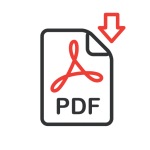PRELIMINARY Programme
DEFINING RARE DISEASES.
THE OSTEOARCHAEOLOGICAL EVIDENCE OF RARE DISEASES:
IDENTIFICATION AND METHODOLOGICAL ISSUES.
8.30 Registration and poster allocation
9.00 Welcome speech
N. Benecke, Head of Dept. of Natural Sciences DAI Berlin
9.15 Introduction to the meeting
J. Gresky, Dept. of Natural Sciences DAI Berlin
9.30 1st Keynote lecture: Thinking about rare diseases
J. Buikstra et al., Arizona State University
10.00 Osteoarchaeological identification of rare diseases from the osteological collection of the Croatian Academy of Sciences and Arts
M. Šlaus, Croatian Academy of Sciences and Arts, Zagreb
10.20 Multiple osteochondromas: current understanding and ideas for the future
E. Murphy – C. McKenzie, Queen’s University Belfast
10.40 Upper Palaeolithic case of deformed femora of Sunghir 3 in context of paleogenetic data
A. Buzhilova, Lomonosov Moscow State University
11.00 – 11.30 Coffee break
11.30 A global perspective on dwarfism – literature review
B. Teßmann, Museum für Vor- und Frühgeschichte, Berlin SMPK
11.50 Dwarfism in predynastic and early dynastic Egypt: new evidences from the elite cemetery HK 6, Hierakonpolis
A. Pieri, Hierakonpolis Expedition
12.10 “The giant among them”: a possible case of pituitary gigantism from the Roman cemetery of En Chaplix, Aventicum, Switzerland (1st-3rd c. AD)
C. Bourbou – M. Milella, University of Fribourg
12.30 – 14.00 Lunch break
14.10 Enlarged parietal foramina in the osteoarchaeological records of the Carpathian Basin
Z. Bereczki et al., University of Szeged
14.30 Isolated or respected? Severe craniofacial cleft from the 10th c. AD in Hungary
E. Molnar et al., University of Szeged
14.50 A case of sclerosing bone dysplasia from 16th c. Sardinia: Camurati-Engelmann disease?
V. Giuffra et al., University of Pisa
15.10 Sclerosing bone dysplasias and the ossification pathway: differential diagnosis of a diffuse sclerosis in a skull of an identified male (early 20th c. Coimbra, Portugal)
B. Magalhães et al., University of Coimbra
15.30 Deep in the marrow and blood: a probable case of ancient leukemia in the South American Andes
M. Toyne – C. Schow, University of Central Florida
15.50 – 16.20 Coffee break
16.20 – 17.00 Poster session. Presentations: no. 1 to 12
17.00 Special talk Archäometrie Netzwerk Berlin Brandenburg
Rare pathologies in deep time – a fresh look at bones of fossil animals
Y. Haridy – F. Witzmann, Museum of Natural History, Berlin
From 19.00 Social dinner at Wirtshaus Heuberger Gotenstraße 1, 10829 Berlin – Schöneberg.
Please book at: rare-disease workshop@dainst.de
THURSDAY 28.02.2019
MEDICAL DIAGNOSTIC AND PALEOPATHOLOGY.
RARE DISEASES YESTERDAY AND TODAY:
DIAGNOSTIC TOOLS, PALEOGENETICS AND HISTORY OF RARE DISEASES.
9.00 Welcome speech to the Rare Disease Day
A. Rath, Director of Orphanet
9.30 2nd Keynote lecture: NGS-based analysis of rare skeleton phenotypes
U. Kornak, Charité Berlin
10.00 A fetus with multiple abnormalities born in 1735
S. Clayton et al., Max Planck Institute, Jena
10.20 Beyond the phenotype: detecting disease with aDNA
L. Cassidy – D. Bradley, Trinity College Dublin
10.40 A parental relationship between three Neolithic skeletal remains from an Apulian town (Italy): a case of family-celiac disease with highgrade osteoporosis
D. Ferorelli et al., University of Bari
11.00 – 11.30 Coffee break
11.30 MRI: a new powerful tool in paleopathological differential diagnosis
M. Čavka, University Hospital Centre, Zagreb
11.50 In silico paleopathology: virtual and quantitative approaches for the analysis of developmental anomalies of the skeleton
M. Milella, University of Zurich
12.10 Osteopetrosis tarda in an adult Neolithic skeleton from Palata 2-Ofanto river valley (Canosa – South, Italy): radiological, histological and confocal laser microscopy study
M. Favia et al., University of Bari
12.30 – 14.00 Lunch break
14.10 Skeletal manifestations of Langerhans Cell Histiocytosis on a 1964 documented case
M. Voulgari et al., University of Athens
14.30 A possible case of Histiocytosis-X and the differential diagnoses in macerated bone specimens
M. Schultz, University of Göttingen
14.50 Can Duchenne muscular dystrophy be a marker for the care given to disabled children in the past?
S. Eggers – M. Berner, Natural History Museum, Vienna15.10 A probable case of Amelogenesis Imperfecta from a Northern Italy Medieval cemetery
C. Tesi et al., University of Insubria
15.50 “Medicinalium Observationum Exempla Rara” by Rembert Dodoens (1581)
M. Dooms, University Hospitals Leuven
15.50 – 16.20 Coffee break
16.20 – 17.00 Poster session. Presentations: no. 13 to 23
17.00 Rare diseases and where to find them. Towards a Digital Atlas of Ancient Rare Diseases
W. Schmidle et al., IT Dept. DAI Berlin
18.00 Late-evening talk (Foyer)
Ancient Rare Diseases: an obscure part of our past, present and future?
A. Grauer, Loyola University Chicago
President-elect of the American Association of Physical Anthropologists
N. Lynnerup, University of Copenhagen
President of the Paleopathology Association
A. Curry
Scientific Press
FRIDAY 01.03.2019
COMMUNICATION, MEDIA, ETHICS.
FROM LABS TO MUSEUMS AND LARGE PUBLIC:
ACCESSING, UNDERSTANDING, TALKING ABOUT RARE DISEASES.
9.00 3rd Keynote lecture: Specimen collections and museums: using the past to inform the present and the future
W. Edwards, Gordon Museum, Kings College London
09.30 The anthropological collection of the Natural History Museum, Vienna. A potential for studying rare diseases
M. Berner – S. Eggers, Natural History Museum, Vienna
09.50 Approach to the formation of paleopathological collections in Russia yesterday and today
N. Berezina – A. Buzhilova, Lomonosov Moscow State University
10.10 – 10.40 Coffee break
10.40 Two women (18th – 20th c.) with short stature: the challenge of the differential diagnosis
A. Santos et al., University of Coimbra
11.00 Evidence for rare diseases in ancient Egyptian mummies and skeletons
A. Zink et al., EURAC Research Bolzano
11.20 Selected cases of congenital malformations and pathologies in a historical wet-specimen collection
P. Eppenberger, University of Zurich
11.40 – 12.00 Closing remarks
J. Gresky, Dept. of Natural Sciences DAI Berlin
POSTERS
1. Achondroplasia in the ancient world
J. Bąk, University of Wroclaw
2. A case of achondroplasia? The child from Diepensee (Brandenburg, Germany)
B. Jungklaus – L. Zamstein, Anthropologie – Büro Jungklaus
3. Genetic detection of achondroplasia in historical skeletal material
M. Rusinko et al., Masaryk University, Brno
4. A possible case of dwarfism in Late Copper Age Italy
N. Zedda et al., University of Ferrara
5. Klippel-Feil syndrome, description of the rare disease by the example of the case report of the skeleton from Wągrowiec (Poland, 14th–17th c.)
B. Drupka et al., University of Wroclaw
6. A probable case of Klippel-Feil syndrome in a Neolithic skeleton from Apulia: radiological and histological analysis with confocal laser microscopy
M. Favia – D. Ferorelli, University of Bari
7. A Neolithic individual with possible Klippel-Feil syndrome and his place in community
Z. Hukeľová – M. Krošláková, Slovak Academy of Sciences
8. A possible case of Crouzon syndrome from Modern-Age Siena (Italy)
Giuffra V. et al., University of Pisa
9. Syndromic bilateral lambdoid and sagittal synostosis (Mercedez Benz pattern craniosynostosis) in a Modern-Age skeleton from Ravenna, Italy: a rare case of Crouzon syndrome?
N. Rinaldo et al., University of Ferrara
10. Syndromic craniosynostosis and Fibroblast Growth Factor Receptors (FGFRs) mutations: Towards differential diagnosis in past populations through skeletal and genetic alterations
S. Zdral – M. J. Trujillo-Tiebas, Autonomous University of Madrid
11. Bilateral protrusio acetabuli in a Medieval skeleton from Transylvania: A Case for Marfan Syndrome
K. L. Filipek et al., Transylvania Bioarchaeology
12. Reconsidering Osteopetrosis: a case from Neolithic Albania
J. Gresky – E. Petiti, DAI Berlin
13. A rare case of Angelman syndrome from the 17th c. cemetery of Ravenna (Italy)
A. Pasini et al., University of Ferrara
14. A possible genetic defect in a young female from Waimanalo, Hawaii -work in progress
S. Storch – B. Heeb, abp – Anthropologie
15. Spotted bones in Buschke-Ollendorf syndrome: a rare and benign disease with clinical significance
S. Zdral et al., Autonomous University of Madrid
16. Case study of rare genetic disorders in children of Medieval and Early – Modern Kiev
Kozak, Institute of Archaeology Kiev
17. Bilateral dysmelia of humerus, ulna and radius and unilateral hypoplasia of the mandible in an Early Medieval skeleton.
C. Meyer – K. W. Alt, OsteoARC
18. Dysplasia of the lower arm in a female from the Merovingian Period in Central Germany
J. Nováček, TLDA Weimar
19. Unusual congenital pathological disorder from the church El-Salvador (16th-18th c., Toledo, Spain)
N. Sarkic et al., independent
20. Development anomalies of the vertebral column in Portuguese prehistoric samples
M. Silva – S. Tereso, CIAS, University of Coimbra
21. Hereditary haemorrhagic telangiectasia (HHT) – a rare genetic disorder as a possible cause of chronic iron deficiency anaemia
J. Nováček et al., TLDA Weimar
22. Could some osseous lesions be predictive of genetic anemia? Discussion about skeletal markers of beta thalassemia in archaeological human remains
F. Scianò et al., University of Ferrara
an initiative of the
Natural Sciences Unit at the Head Office
of the german archaeological Institute





